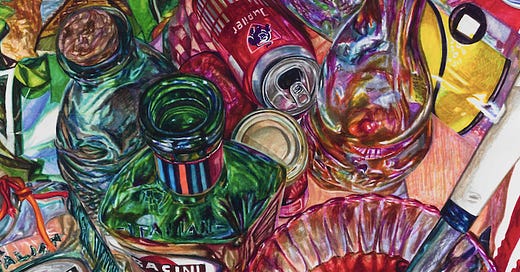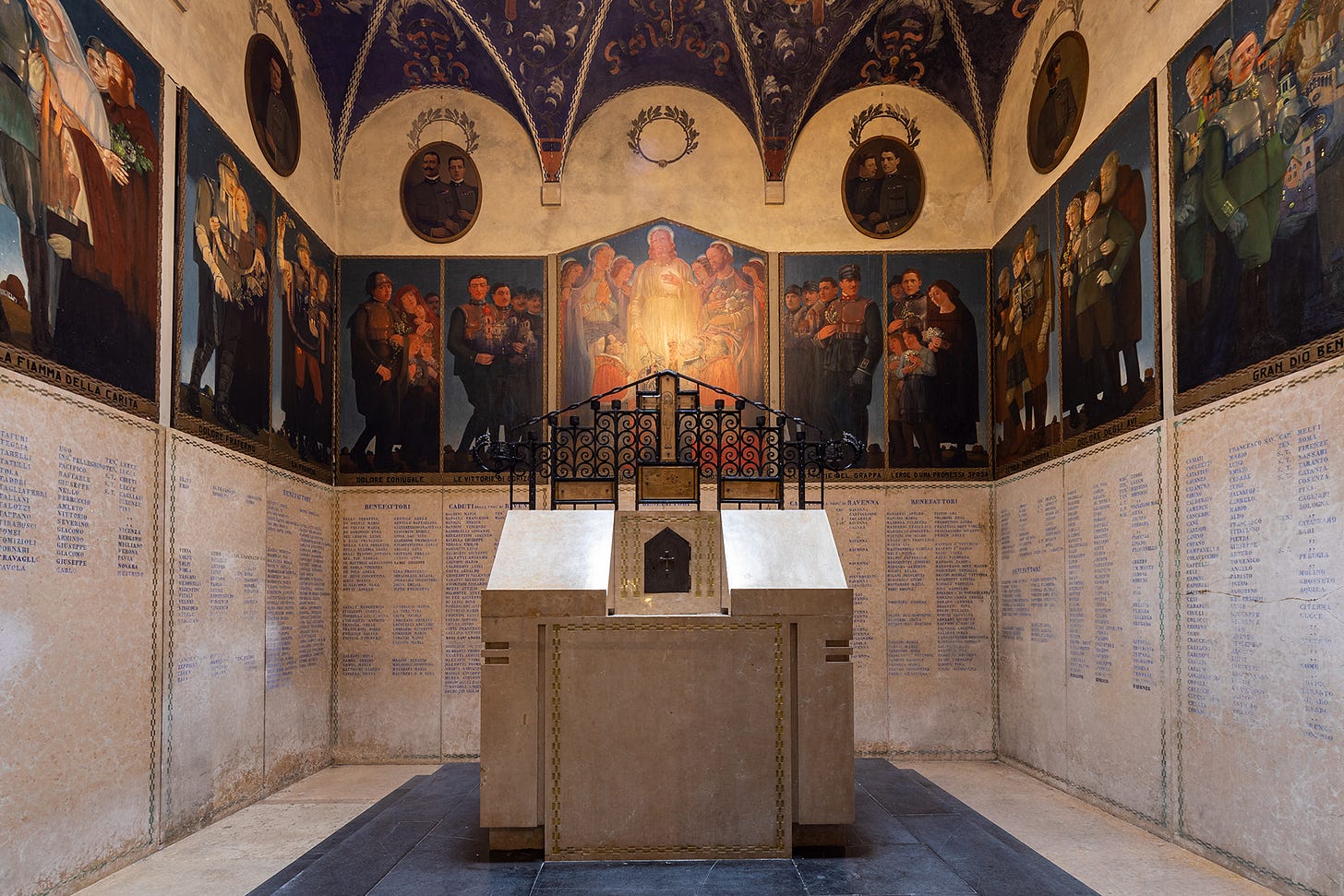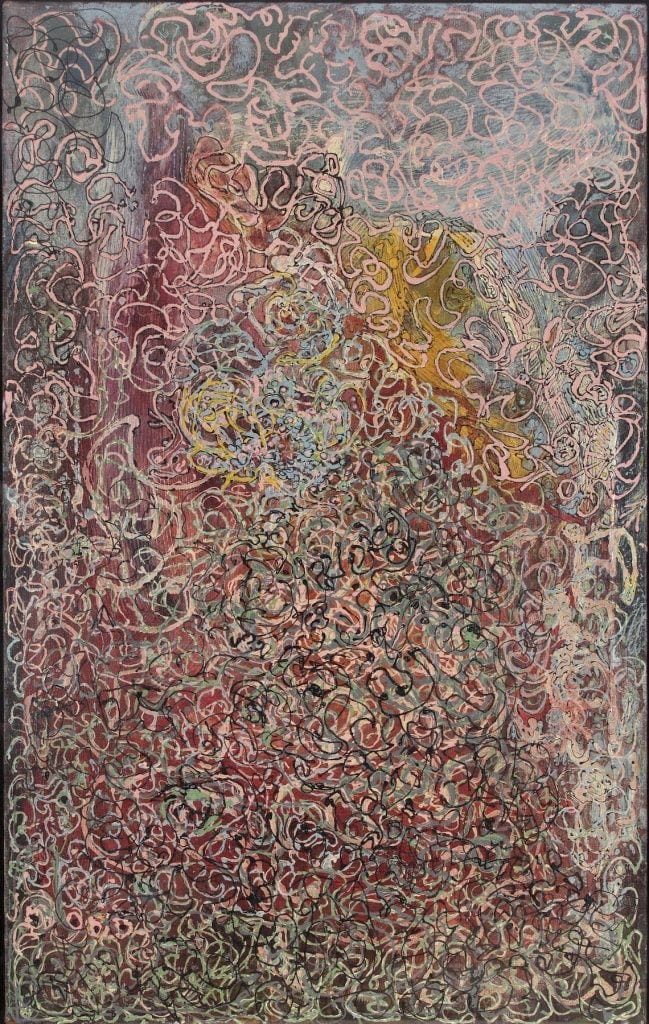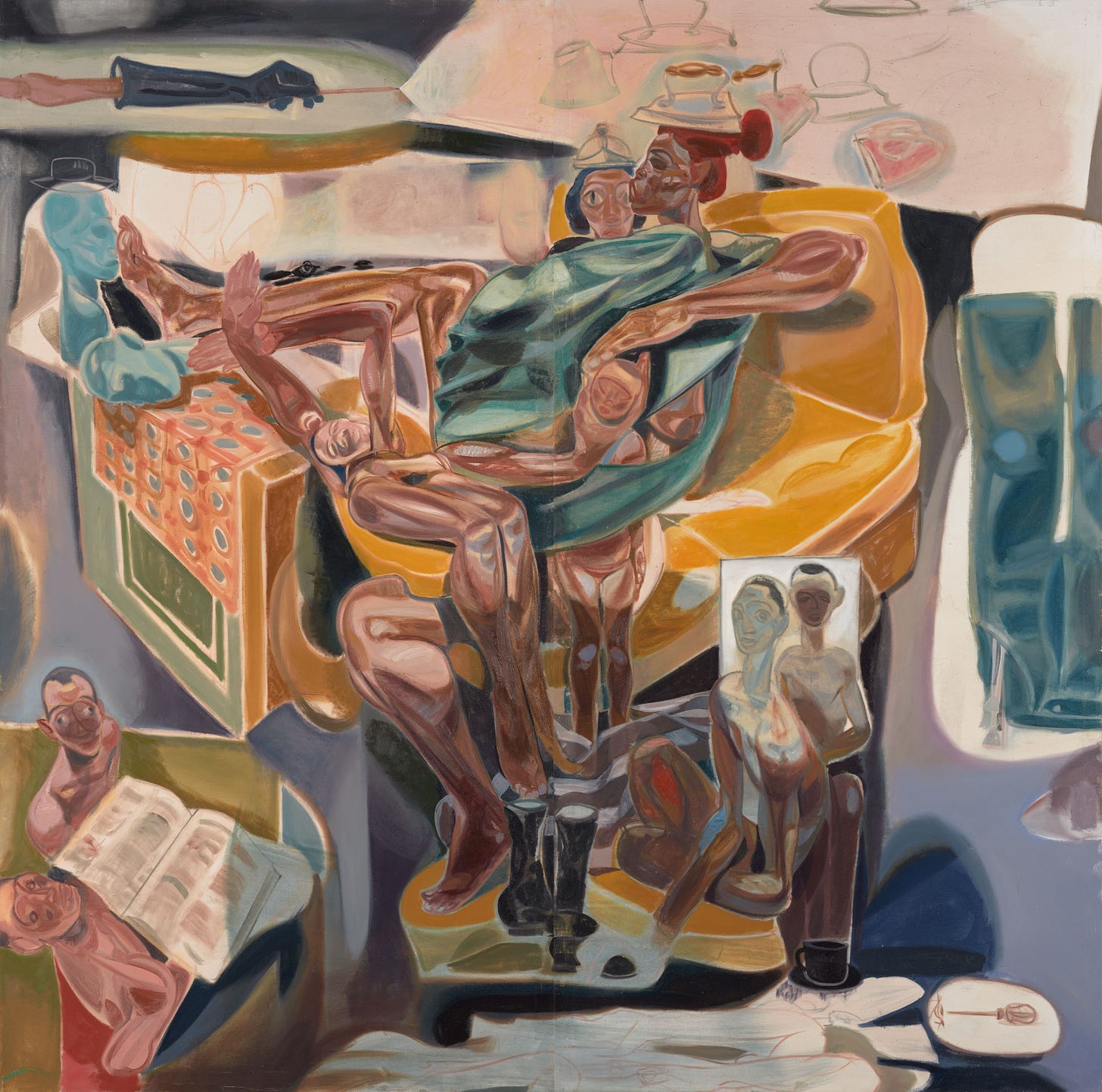Farewell 2024! Art I Loved This Year
As we're getting ready to celebrate New Year's Eve (or not, in case you rather snuggle up in peace), let's wrap up this year with art that has me in a chokehold.
10. Ilona Keserü
I first learned about Ilona Keserü (Silent Generation, Hungarian) in Venice at one of the exhibition venues of the European Cultural Academy. Going to an ECA exhibition is like shopping at TJMaxx: You have to search through the racks of a whole lot of crappy, lipstick-stained clothes to find a gorgeous, underpriced piece. I mean that’s also how I came across Sevina Tzanou’s (Millennial, Greek) art and loved it. I stopped right in my tracks when I saw Ilona’s work: Large paintings with bright paint clustered in color schemes and wavy sculpted canvases. Ilona brings out the fabric quality of the canvas, reminding me that it’s always textile before it becomes another flat painting surface. Works I assumed to be fresh out the studio turned out to be from the 70s and 80s! I hope to see her solo show at Muzeum Susch next year.

9. Sigmar Polke
I’m a Polke Ultra. There. I said it. I’ve always liked Sigmar Polke (1941-2010, German), but this year (even though Schinkel Pavillon massively fucked up his show), I finally realized how obsessed I am. His work just does something to my entire nervous system. Translucent polyester instead of canvas? Count me in. Painting on wallpaper? YES SIR! Messy polka dots and pop culture references? HELL YEAH. Combine that with German dry humor pun titles and I’m all yours.
At mike karstens’s booth at Art Cologne, I saw my absolute favorite Siggy work in the history of ever: A layered negative print. A woman’s body in the center. Mirrored hands ringing a doorbell. Could be footage straight out of Alfred Hitchcock’s Psycho (1960). The best part? It’s on fucking lizard skin paper. I’m an absolute texture girly. Shit got me looking like Leo biting his fist in The Wolf of Wall Street (2013).
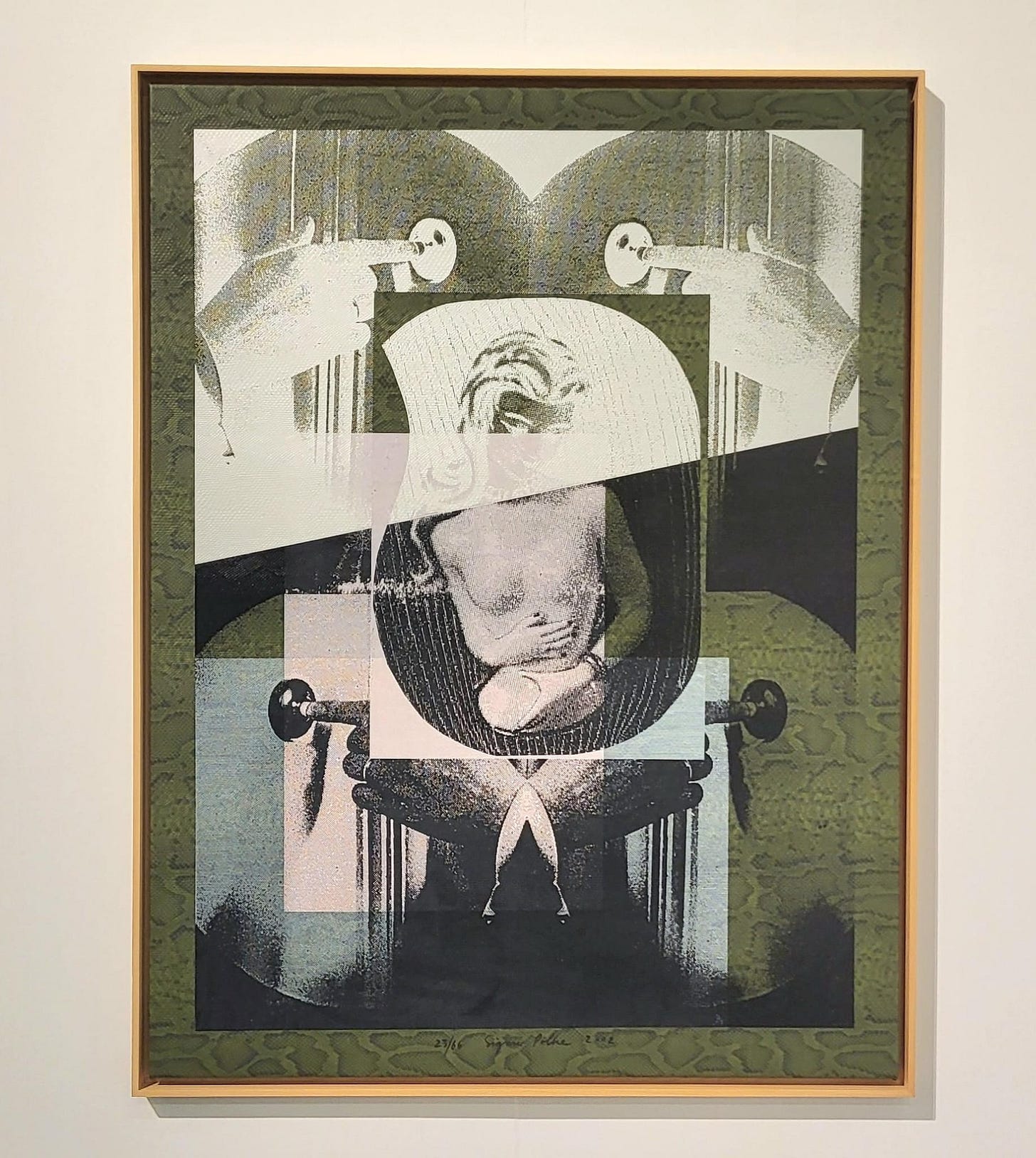
8. Sarah Kürten
I first saw Sarah’s (Millennial, German) works in January and instantly fell in love. She just has a way with words and aesthetics that bring across the anxiety, hypocrisy, and impostor syndrome of navigating enviable (or not) social and financial circles. Reading her poems and deciphering her references to past and present phenomena, I feel like she’s saying I see you. I know how you feel. It was such an honor to meet Sarah in her studio a couple of weeks after seeing the show and it was an even greater honor to write a text for her new forthcoming publication against a shadowy tree line.
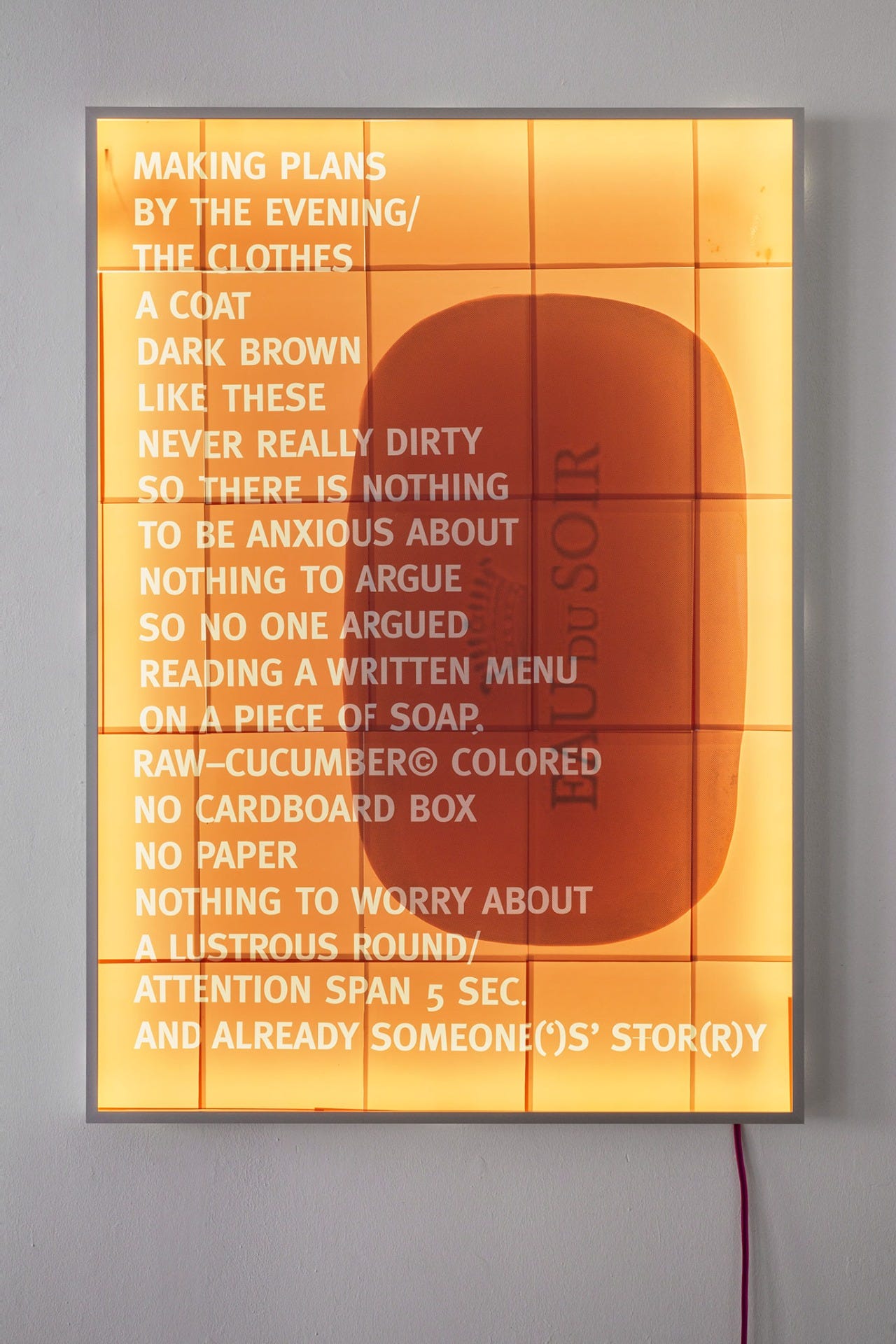
7. Roberto Montenegro
You can say what you want about this year’s Venice Biennale. But the most invaluable, precious contribution that curator Adriano Pedrosa (Gen X, Brazilian) made with his exhibition is presenting the art historical diversity from all across the globe. I got to see works I might never see again, artists I’ve never heard of before but make me want to write an entire thesis about them. One of these artists is Roberto Montenegro (1887-1968, Mexican). I saw his painting El Pescador de Mallorca [Majorcan Fisherman] (1915) almost every day this summer. Every single detail captivated me: The proud, aristocratic stance of this man; the glistening sheen on the fish he’s carrying; the cacti making space around his head to reveal the golden cliffs behind him, shining like a saintly halo around his face; the deep blue Mediterranean sea; the variations of blue on his shirt and the white and pastel blue and violet shades of the trees similar to the palette of Ferdinand Hodler (1853-1918, Swiss).
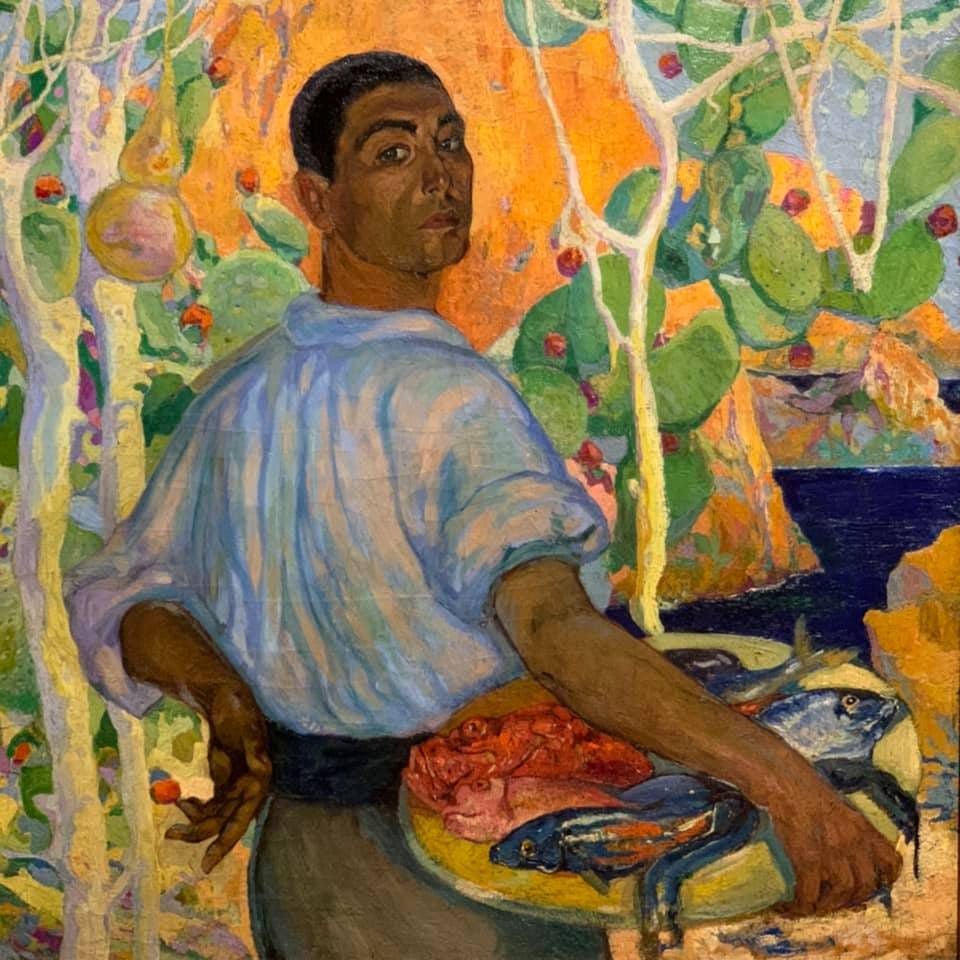
6. The Chapel of Peace and Victory
I went to Ravenna with a friend to see the famous Byzantine mosaics. I was giggling and kicking my feet all day at all the beautiful, shining stones that somehow survived to this day. Hyperfixated on centuries-old mosaics, I wasn’t prepared at all when I entered the Chapel of Peace and Victory inside the Basilica of Sant’Apollinare Nuovo. The Chapel was built to commemorate the first aerial raid on Ravenna on February 12, 1916, and the death toll in Italy and among the Allied Forces during WWI.
Carlo Donati (1874-1949, Italian) was commissioned to make the paintings connecting Christian and war iconography: Carlo shows the pain of a mother through a woman holding on to a soldier, his hands wounded like Christ’s on the cross. “The flame of Charity” panel shows another soldier wounded like Christ taken from the cross, a nurse in white holding him like Mary while a crouching nun with bottles of medicine alludes to the Mary Magdalene who balmed Christ’s feet with precious oils and perfumes before his betrayal (John 12). Military officials hold small churches and city buildings in their hands, just the way saintly patrons and rich donors do in Medieval art in offering to God for protection. I was fascinated with how beautiful these paintings looked even though I remained critical: Spirituality is exploited for the sake of politics. Or is it the other way around? My first thought was that it’s borderline blasphemous. But it’s only blasphemy if you think that politics and religion have ever been separate…
5. Janet Sobel
When I first learned about Janet Sobel (1893-1968, US-American) two years ago, her immigration to the US as a little girl, her life as a mother, her first experiments with drip painting, the support she got from Peggy Guggenheim, the denigration she faced from shithole hypocrisy critic Clement Greenberg, her technique being stolen by Jackson Pollock (1912-56, US-American) and attributed to him, life circumstances turning against her, only to be forgotten and abandoned by the world, dying all alone so that not even her children know the day she left this world — I was devastated. I felt betrayed by art history claiming to be a true portrait of the history of art. I was enraged by the men who used their position in life to keep this woman down. And they still do whenever I speak about her.
I hoped to see her work at MoMA when I went to New York last year. The only work they had was in storage. I was heartbroken. Fast forward to March 3, 2024. I went to Kunsthalle Bielefeld with a dear friend of mine. We went to the city that doesn’t exist to see the Women in Abstraction show there. We go inside and my heart skips a beat as I see the very first work of the show: I recognize the color palette, the dripped layer of dark paint turning into figurative faces. I run up to the work. I read the label: Janet Sobel, untitled, ca 1948. I break down in front of her. In a place where I didn’t expect it, when I thought nobody will give her the space she deserved, I finally saw Janet. Not once but twice with a second work upstairs!
My heart aches thinking about how she didn’t live long enough to see how in 2024, two art historians, two young women, stand in front of her work exhibited on another continent, admiring what she did with tears in their eyes.
4. Tesfaye Urgessa
Hands down my favorite pavilion of this year’s Venice Biennale: Ethiopia. When was the last time you saw an exhibition so gorgeous you wanted to drop on your knees? I sure wanted to when I saw Tesfaye Urgessa’s (Millennial, Ethiopian) work. His style mingling between the London School, Soviet Realism, and Christian Orthodox iconography stole my heart. If you haven’t read my review of the pavilion, check it out here.
3. Wael Shawky: Drama 1882
I can’t count how many times I’ve watched the entire Drama 1882 film at the Egyptian Pavilion this year. Wael Shawky (Gen X, Egyptian) entranced me through his storytelling, awe-inspiring music, and beautiful visuals. When the Egyptian army sings with Ahmed Urabi, swearing to defend the country? Goosebumps. The money I would give to see this as a live-action play in a theater… I don’t want to repeat what you already know, so you can read my review for a deep dive into this work.
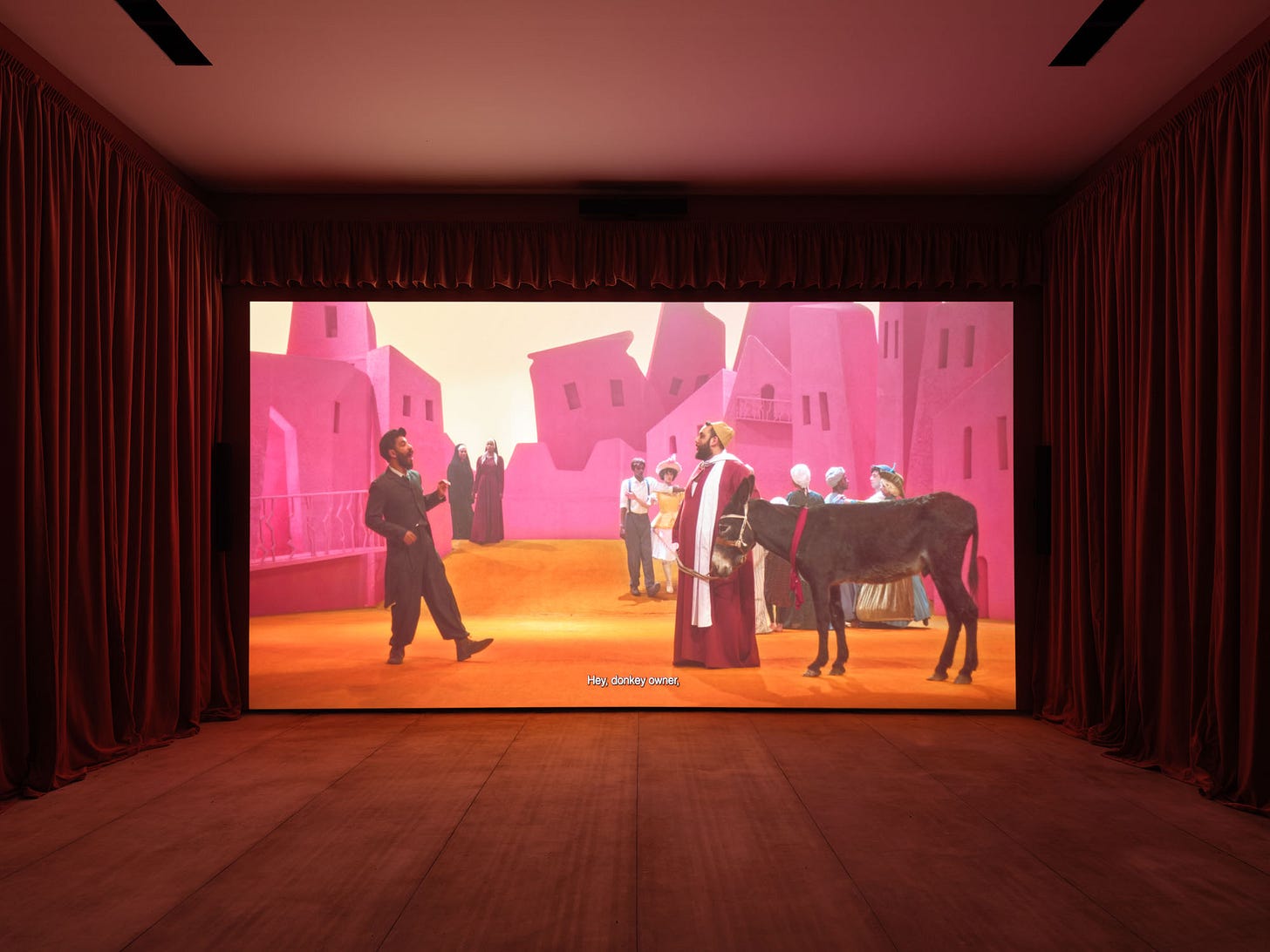
2. Giulia Messina
So I was getting ready for my second day trip to Milan this summer. The main reason I wanted to go again was to see Giulia Messina’s (Gen Z, Italian) show at Lupo. I saw her work online and went Holy Guacamole: Girlypop is drawing all that with text markers?! Say no more. Guess what happened? I saw every show BUT Giulia’s. Turned out I needed to go upstairs at one gallery but didn’t. I was fuming on my way back to Venice.
Fast forward to October, I got to spend a beautiful day in Brussels and meet Giulia in her studio! I swear her works look even cooler in the flesh. These extremely saturated dinner scenes, portraits, and still lives remind me of those deep-fried, oversaturated pics that used to be popular around 2015 (now this style is just a meme, but it used to be unironic). I think of the American Hyperrealists looking at Giulia’s work, especially Audrey Flack (1931-2024, US-American). Just like the hyperrealists often did, Giulia draws based on pictures she had taken earlier. But she adds a twist by inserting little easter eggs instead of copying every detail truthfully. My feelings are conflicting because I want Giulia to become famous as fuck but I also want to afford her work. Keep going, Queen!
1. Andy Warhol: Jed Johnson in a bathtub, 1980
Call me Will cause I’m Ferrel. When Lana sings Dear God when I get to heaven, please let me bring my man, this is who I picture. I thank everyone at Neue Nationalgalerie who made the inclusion of this gem at the last Andy Warhol (1928-1987, US-American) show possible but I do have some questions. 1. Why have I never seen this work before? 2. Why wasn’t this work plastered on every billboard in Berlin? 3. How could you make us live without this? 4. Who’s coming with me to the Andy Warhol Museum in Pittsburgh to rob it? For legal reasons, this is a joke. Like I can’t bear the idea that Andy just took this picture on a random Tuesday afternoon and went on with his life as if nothing happened.
I need the United States to declare this photograph a National Treasure. Scratch that. I need UNESCO to make it World Heritage. This is my Jeremy Allen White Calvin Kline campaign (iykyk). The Art Crush of the Year was supposed to be a recurring award but to be honest, I don’t think we’ll be ever able to top that. Like that’s it, we can pack it up.

Thank you so much for looking at art with me this year! I hope you enjoyed it as much as I do. I’m so excited for what lies ahead!
See you in 2025!!!
Jennifer
The Gen Z Art Critic


